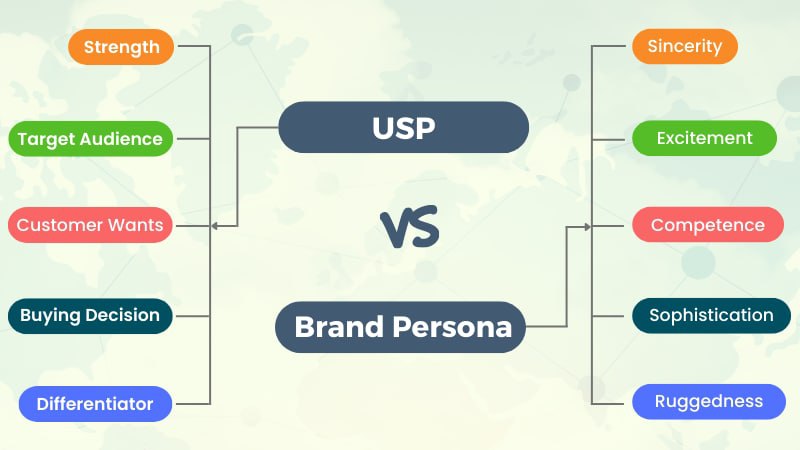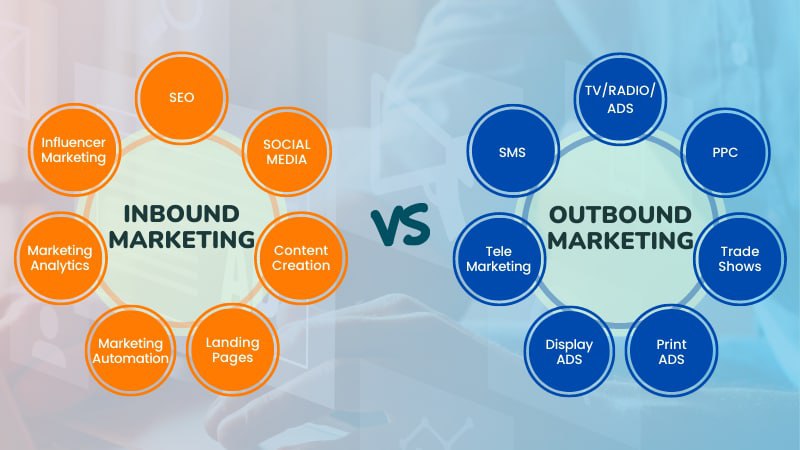
Each interaction with any client, either online or offline, reveals something about the USP and the brand persona. How can you establish the company's most effective USP and brand identity? Let’s explore their differences.
What is a Unique Selling Proposition (USP)?
A distinguishing element or quality that separates a business from its rivals refers to the unique selling proposition. In promotional activities, product or service details, and other consumer tactile buttons, physical and digital companies strive to explain the USP to customers effectively.
There are multiple benefits to developing a USP, yet this essentially helps clients to distinguish a company from competing firms. This doesn't take much time for prospective clients to determine whether they prefer that particular product of that brand or not. Any company that desires to be competitive in the marketplace must formulate a USP.
Five primary aspects of USP:
- Advantages
- Emotions
- Major selling features
- Fundamental distinctive Points
- Beneficial Competitiveness
How to Creating Unique Selling Proposition
USP, explains what distinguishes an item or brand and what helps to make that company a superior choice over its rivals. A good USP is not more than two phrases long. Maintain a concise and to-the-point message.
Step One: Determine the core demographic.
Step Two: Make a list of the issues that the item resolves.
Step Three: Specify the advantages that separate the product from others.
Step Four: State the commitment precisely.
Step Five: Integrate everything into a couple of sentences.
Step Six: Reduce it to a single statement.
What is a Brand Persona?
A brand persona refers to character qualities, behaviors, and beliefs that allow people to recognize and engage with the company. It, therefore, forms the set of physical representations or engagements that a firm makes available to the public, along with many intangible attributes.
Importance of Brand Persona
A brand persona is a collection of qualities, beliefs, styles, and mindsets a company uses to engage with certain target demography. Continuity is promoted through a brand persona.
Fundamentally, it provides staff with a benchmark for how the company should be represented, allowing them to do so properly. From the outside point, it provides buyers with a face to connect, creating a more specific image. The correct character may support the company in the future by being closely identified with the business.
Characteristics of Well-Known Brand Personas
As mentioned earlier, a brand persona is a structure that helps a firm shape how humans perceive its goods and services, as well as the organization in general. A large part of this objective is generating feelings and emotions and motivating good behaviors that favor both the consumer and the company. The following characteristics can be a good starting point for brand personalities -
- Caring Nature: This loving character is welcoming and understanding. It concerns the requirements and needs of the clients.
- Proficient: This identity is an effective, extremely qualified, and experienced commander who can assist or persuade people to react.
- Thrilled: This vivacious demeanor is up for any challenge and enjoys going on explorations. It is exciting, daring, and committed to taking on any work to assist the consumers.
- Solidly built: This tougher and much more robust demeanor is sporty. It will not stay in a bubble and consider starting to obtain things and enjoy freedom.
- Elegant: This character conveys refinement, grace, and reputation, inspiring clients to treat themselves to high-quality activities.
Development Suggestions
Every one of these refers to an activity that can serve as an agenda-
- Begin by creating and developing a brand.
- Keep a close eye on the clients.
- Develop a distinctive picture.
- Generate a summary of the brand.
- Organize a list of the brand's characteristics and those you wish to promote.
- Determine what the character is.
- Explain how this character will behave and include relevant samples.
- Explain how well the character connects with everyone.
- Create a featuring and attractive guideline with graphic elements corresponding to the identity.
Key differences Between Unique Selling Proposition (USP) and Brand Persona
Customer Relationship: A USP is what drives a client to choose one brand's goods over another. However, a real brand persona may help individuals build complete faith and retain commitment.
External Impression: A brand persona seems to be the physical depiction of a company's presence and the embodiment of its connection with everyone. USP serves as a differentiator that tends to make any brand or service or product more significant to the buyers or clients.
Competency: One of the core strategies to attracting prospective clients to engage on your side is to convey the USP properly and fast. Brand personas keep a true relationship between the business and its customers by giving them the impression as though they are familiar with the brand as well as desire to be a member of what it stands for.
Practical Example
Example 1
Distinct items have different USPs. Consider a business that is well-known around the globe for its ready-to-eat meals. The firm produces nutritious meals with options for customers.
Customers searching for a fast lunch with nutritional benefits may stroll into any restaurant of this company and get one built quickly. As a result, this business can establish its specialized marketplace throughout town. The company's USP is a healthy and quick-ready meal at a moderate cost.
Example 2
Ruby is 35 years old and a management graduate. She is unmarried and lives in a town with a roommate in a flat. Ruby has a decent salary and chooses to dine out most evenings because she avoids cooking.
She craves diversity and enjoys trying different restaurants on occasion while selecting a place for supper. Her preferred restaurant is close to home, well-presented, and welcoming, serving Italian cuisine at a reasonable price for repeated visits.
As a result, she frequently visits the exact two or three eateries near her home and office where she goes with her colleagues and friends. She occasionally orders quick food to pick up on her way home. Any brand with this brand persona will be attractive to Ruby.
Unique Selling Proposition (USP) vs. Brand Persona Comparison Table
|
Category |
USP |
Brand Persona |
|
Meaning |
The characteristics and core beliefs that distinguish the identity |
Personalities that best symbolize the company |
|
Objective |
To separate itself from competitors in a nearly equivalent segment |
To perfectly represent a brand as an individual entity |
|
Impact |
Offers a competitive advantage. |
Builds an established character and supportive goodwill |
|
Elements |
Items, pricing, and Customer Service |
A figure, a personality, a logo, or a concept |

